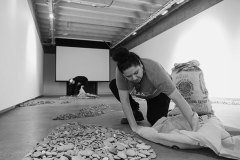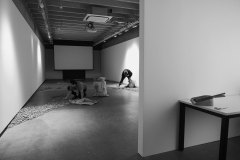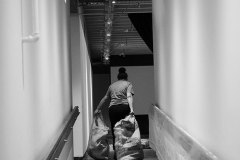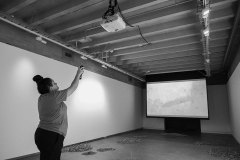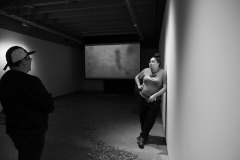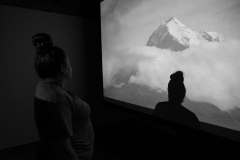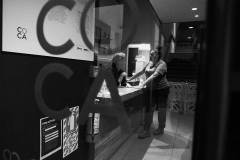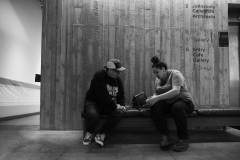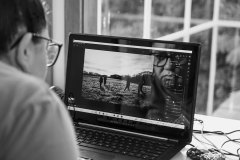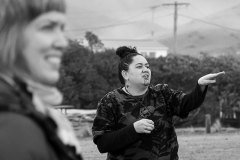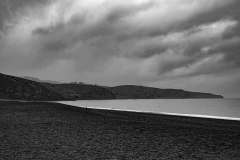Te Ao Māori
Jul 11, 2023

Photographs and words nā Phil Tumataroa
A window into the rich lifestyles of contemporary Māori
Standing on the windswept shingle of Te Mata Hapuku (Birdlings Flat), Tia Barrett feels at home.
It’s a familiar place. It’s where her mother, Dr Alvina Edwards, grew up and it’s just an hour’s drive from Ōtautahi where Tia spent her first 10 years before mum moved them up north.
Tia (Ngāi Tahu, Waitaha, Ngāti Mamoe, Ngāti Maniapoto, Ngāti Tamainupō) arrived in town the day before to start installing her exhibition, He Pounamu Ko Au, at the Centre of Contemporary Art (CoCA), which is reopening after a year-long hiatus.
Her partner, Zena Elliott, also an artist, and her mum have made the trip south too and along with a mini bus full of volunteers they are on the beach filling sacks with flat grey stones to be used in her installation.
He Pounamu Ko Au formed part of Tia’s thesis of the same name and helped her on the way to being a recipient of the Arts Foundation Springboard 2023. The award recognises her as an emerging Māori artist, and includes a cash prize and mentoring from Ngāi Tahu 2019 Arts Foundation Te Tumu Toi Laureate, Louise Pōtiki Bryant.
The exhibition layers photographs, sounds and moving images that Tia captured at different locations around Te Waipounamu, including Ōpukutahi, Te Mata Hapuku and Aoraki. The gallery floor is laced with stones representing the whenua and the awa that cross Kā Pākihi Whakatekateka o Waitaha (Canterbury Plains).
Tia also wrote her first mōteatea, drawing on the skills of her tipuna wahine, Amiria Puhirere Hokianga.
“I wanted to write and include mōteatea; I’m not fluent in the reo but I know that by starting the process of trying to compose a mōteatea it can help bring out those inter-generational talents.”
Tia describes the mōteatea as the storyteller to everything in the exhibition; and, like the exhibition, it gives voice to her journey of reconnecting with her whenua, her identity and her art practice.
“We are all still pounamu no matter how rough our journey has been or how fragmented we have been through the journey. That’s why I used pounamu as the lens to look through because it speaks to so many different layers of how we see ourselves as Māori. No matter what it looks like, what it’s been through, how smashed up it’s been, it’s still precious.
